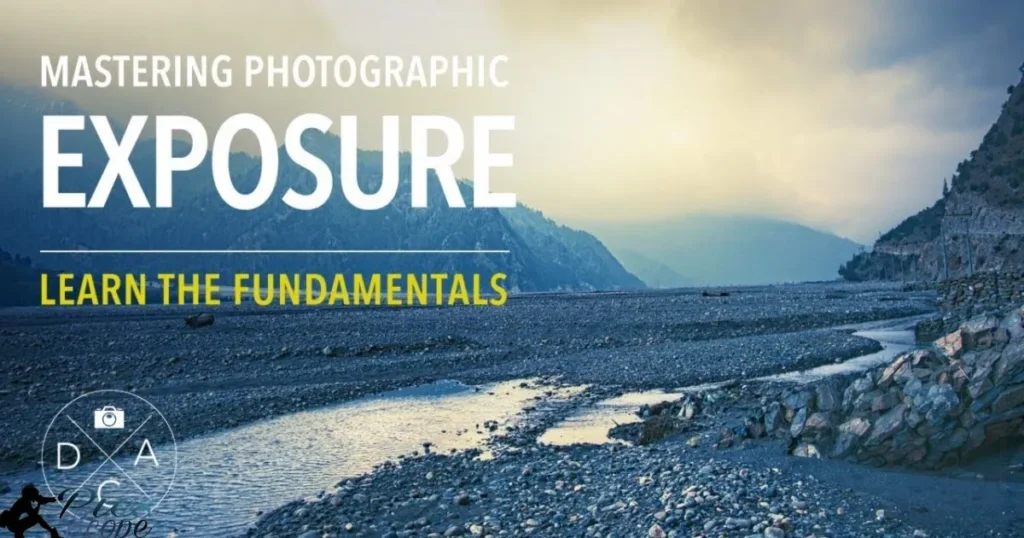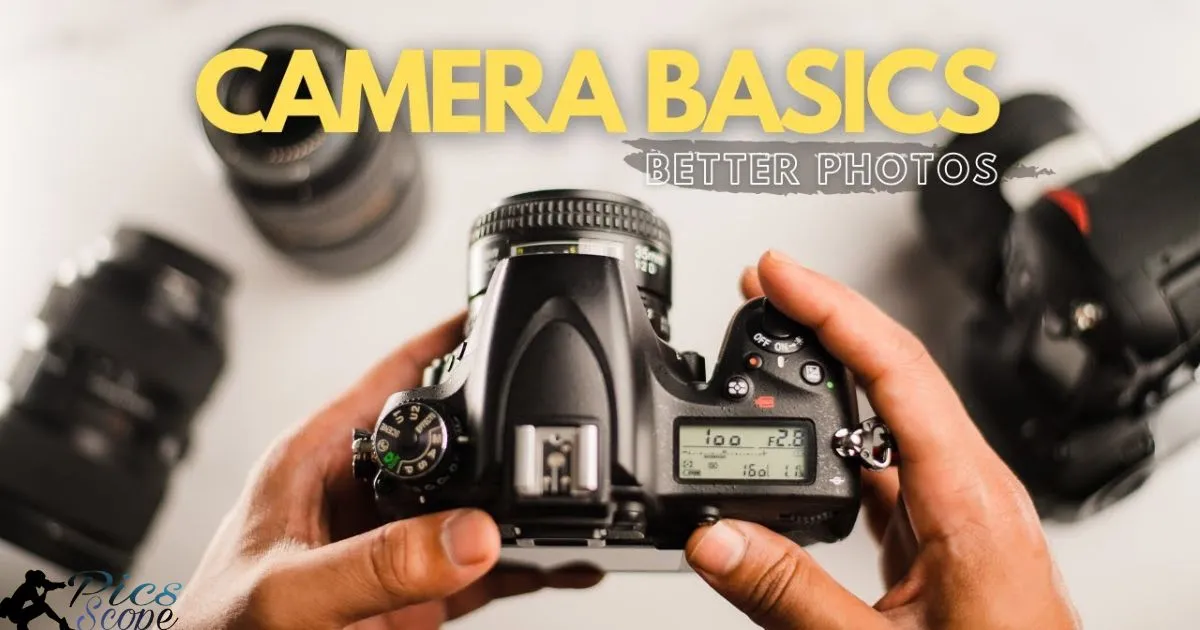The basics of photography refer to the essential elements needed to take a photo. These include a camera, understanding exposure, and composition. A photographer must know how to use a camera’s shutter, aperture, and ISO settings to properly expose an image.
“What Are The Basics Of Photography?” This age old question has intrigued many over decades of development in the art. From early box cameras to modern digital devices, the principles remain fundamental to capturing light and translating a scene.
The basics include more than just using a camera. Composition is critical to framing a shot and guiding the viewer’s eye. Seeing light and shadows to convey mood or realism in an image forms a major part of the fundamentals. With practice of these simple building blocks, a photographer can grow their skills and express themselves creatively.
Understanding Photography Equipment
Photography equipment allows capturing of images. A camera is the main tool used. Cameras can be digital or film based. They allow setting exposures to record light.
Other essential gear includes lenses, memory cards, and batteries. Lenses provide different views from wide angle to zoomed in. Cards securely hold snapped photos. Batteries power camera functions. Together this equipment enables creative photography.
What Camera Should I Use for Photography?
The type of photos you want to take determines the best camera. Beginners may prefer simple point-and-shoot models. They are easy to use with few settings. More advanced amateur photographers benefit from a DSLR.
These have swappable lenses and full manual controls. Get Into Photography Professional photographers use high-end mirrorless or DSLR cameras to get clear sharp images.
Camera features like megapixels, zoom ranges, and video functions vary. Research camera options that suit your skill level and scene subjects. Ask other photographers for camera recommendations too. Testing cameras aids a choice comfortable for your photography needs.
How Does Aperture Affect Photography?
Aperture is the opening in a camera lens which controls light amounts. It is measured in f-stops like f/2, f/5.6, f/16. Wider apertures like f/2 let in more light while narrower ones like f/16 allow less.
Larger apertures produce shallow depth of field for backgrounds to blur. Smaller apertures give greater depth of field with backgrounds in focus too. Understanding aperture impact on exposure and focus assists creative photo compositions.
What Role Does ISO Play in Photography?
ISO is a camera’s light sensitivity setting. Higher ISO numbers like 1600 are more sensitive to light. They allow faster shutter speeds to freeze motion in lowlight situations but can add more image noise.
Lower ISO settings like 100 are less sensitive. These need longer shutter speeds but capture photos with less grain. Choosing the right balance of ISO and shutter depends on lighting conditions and desired effect. Playing with ISO expands photo-taking possibilities.
Do Shutter Speeds Matter in Photography?
Shutter speed is the amount of time the camera shutter is open. Slower speeds like 1/30 sec allow more light in for bright scenes on sunny days. Faster speeds like 1/500 sec are needed to stop motion in low light or when photographing moving targets.
Slow shutters lend to blur for showing motion such as flowing water. Fast shutters freeze subjects in place, whether people, wildlife or sports. Understanding how shutter speeds impact blur can inform artistic choices made with each shutter press.
Mastering Photography Exposure

Exposure refers to the total amount of light recorded by the camera’s sensor or film. When the exposure is correct, images have accurate color and brightness levels without being over or underexposed.
With practice matching aperture, shutter speed, and ISO settings become second nature for capturing properly lit photos. Metering subject brightness aids exposure determination too.
How Can I Expose Images Correctly in Photography?
Careful examination of a scene’s available light aids in choosing exposure settings. In brightly lit landscapes, small apertures and fast shutters may suffice. Dim interiors demand wide apertures and high ISO to compensate for little light.
Most cameras have a light meter to analyze scenes and suggest settings. Experimentation by taking test shots then viewing results on screen helps match exposure to intent over time. With experience comes a sixth sense for exposing photos accurately.
What Is Exposure Compensation in Photography?
Exposure compensation is a camera function that adjusts the default light meter reading up or down by set levels like +1 or -2 EV. It is useful when metering reads a scene incorrectly as too bright or dark.
Often snowy or very dark subjects will seem under exposed, so raising exposure compensation boosts the default setting. Conversely, shots against bright windows are prone to overexposure, remedied by lowering the compensation dial setting. This convenient tool helps capture perfect exposures.
When Should I Use Manual Mode in Photography?
For stationary subjects where changing conditions are not a factor, manual mode gives full control over exposure settings. It allows consistent settings across multiple shots.
Environments with mixed lighting also benefit from manual settings dialed into different areas of a scene. Professional grade cameras have fewer automatic settings, so photographers depend on manually commanding exposures. With understanding of light and cameras, manual mode provides versatility.
What Is Depth of Field in Photography?
Depth of field refers to the range of distances within an image that appear acceptably sharp. The amount of depth of field in a shot depends on factors like aperture size, distance to subject along with focal length of lens used.
Wider apertures permit shallower depth of field for a subject and background to blur the eye from distractions. Smaller f-stops give greater depth in which more remains in focus. Controlling depth of field delivers creative results.
Developing Composition Skills
Composition refers to how visual elements are arranged and presented in a photo. With attention, composition transforms snapshots into careful works of visual art.
Framing a scene, arranging subjects off-center, and filling empty spaces makes for nice rhythm and flow guiding the eye naturally across an image. Strong compositions keep viewers engaged.
How Do I Frame a Photo for Better Photography?
Photo framing uses the viewfinder or screen to intentionally include and exclude what is shown within the edges of the shot. Too much empty space or unwanted clutter detracts from the focus.
Simple framing techniques like centering a main subject, including relevant backgrounds, or framing vertically for tall elements strengthen photos significantly. Practice seeing scenes from new angles.
What Makes a Good Composition in Photography?
| Element | Description |
| Rule of Thirds | Aligning subjects near intersections of an imaginary 3×3 grid produces balanced images. |
| Leading Lines | Elements like paths guide the eye naturally into and through the frame. |
| Simplicity | Limiting distractions in cluttered scenes helps subjects stand out clearly. |
| Negative Space | Including some open area surrounds subjects and makes compositions feel airy. |
| Viewpoint | Altering typical angles captures scenes dynamically from new perspectives. |
| Framing | Including beneficial context while removing surplus information strengthens images. |
| Brightness | Appropriate tonal range between darkest and lightest areas evens out exposure. |
Where Should I Focus My Photography Composition?
Beginners aim for rule of thirds alignment of a main point of focus within those grid intersections whether people, structures or nature. Filling negative space strengthens these centered shots.
More advanced photos break these guidelines for effects like dominating center placement and asymmetry. Understanding basics helps find your own style through experimenting with alternative framing approaches.
Can Leading Lines Enhance Photography?
Natural or man-made lines found within landscapes intrinsically direct the viewer’s gaze along a certain path straight into or throughout the scene. Curving paths, flowing rivers and winding roads make compelling leading lines.
Adding artificial graphic lines by tilting the camera captures dynamic angles bringing depth and movement. Over time honing an eye for lines already present improves photo storytelling through framing.
Seeing Photography as an Artform
Photography elevates from snapshots to artwork through lighting, emotional content and aesthetic design. The way an image is illuminated creates drama or delicate nuance.
Strong emotions like joy, sadness and wonder infuse photos with depth for others to connect over. Careful shots portraying intriguing designs are timeless to return to admire purely as visual feasts.
How Can I Convey Emotion Through Photography?
Emotional resonance depends first on understanding the feelings one wishes to share and what cues awaken them. Happy photos show smiling faces in fun settings offsetting darker emotions.
Symbolic props, body language or thought-provoking backdrops imply deeper feelings effectively. Capturing raw moments of connection between people naturally evokes sentiment too from any viewer.
What Artistry Can Be Achieved in Photography?
All forms of photography offer artistic merit, whether portraits, landscapes or specialized types. Careful editing transforms basic images into sophisticated gallery-quality works of art.
Styles like long exposures, macro photography and advanced lighting capture fleeting beauty not seen with the naked eye. Conceptual or symbolic photos provoke thought as much as admire for technique alone. Creativity behind even snapshots shows artistry.
What Genres Excel in Creative Photography?
Portraiture, street photography and architectural shots constrain photographers to available light encouraging improvisation. These genres epitomize capturing life’s candid situations and surroundings.
Natural world close-ups reveal intricate marvels invisible at first glance. Timelapse and low-light photography push equipment limits for mystical results, while drone photography accesses new perspectives steeped in wonder. Specialties bring out photographers’ creative flair.
How Do Photography Styles Differ?
Visual styles range from photojournalism to conceptual art. Some favor vivid colors and crisp focus. Others use blur, grain or monochrome for retro or dreamlike moods.
Experimental techniques bend rules by cropping tightly or applying effects not intended. No right or wrong exists, only individual expression that evolves over practice. Exposure to varied work breeds new ideas too.
Continually Improving Your Photography

Advancing photography skills demands continuous learning whether through books, classes, or online forums. Guidance helps hone technique and provides objective feedback on work.
Joining photography communities presents opportunities to learn from others, give feedback, and draw inspiration too from diverse styles. Knowledge comes from directly experiencing different forms of visual artworks as well.
Resources Can Help Improve My Photography
5 easy short resources that can help improve photography
- Online tutorials – Guides on sites explain concepts through video and text.
- Photography books – Books focus on topics and include projects to advance skills.
- Workshops – Learn from experts through hands-on practice and feedback.
- Photo clubs – Joining a local club attends shoots and reviews each other’s work.
- Exhibits – Seeing others’ artistry in person fuels new ideas and techniques.
How Can I Get Better at Photography with Practice?
Daily shooting with a theme in mind like only black and white or nighttime scenes exercises seeing through different perspectives. Committing to one subject or location across seasons portrays subtle changes too.
Experiment fearlessly, then review what worked best immediately afterwards. Critiquing one’s own photos with an open mind identifies strengths and weaknesses to target practice towards. Over time skills improve through constant learning and application.
What Can Photography Exhibitions Teach Me?
Seeing others’ published gallery or competition pieces widens understanding of varied concepts, styles and processing types from photos hung on walls compared to screens.
Interaction with exhibiting artists provides insider perspectives on their creative vision and techniques. Noting what grabs personal attention or seems groundbreaking cultivates individual tastes. Admirers often become inspired photographers themselves.
Should I Specialize or Generalize in Photography?
While maintaining flexibility to portrait weddings or pets, specializing deepens skills for fine art shows, publications or careers. Wildlife photographers spending years learning species yield stunning realistic photos.
Generalists gain more versatility for commercial usage but sacrifice expertise. Both have merit depending on goals. Overall a balance of exploring myriad subjects combined with intensifying in favorite types energizes growth as an photographer.
Frequently Asked Question
What Constitutes The Basic Equipment?
A camera, lenses, memory cards, and batteries make up the essential gear.
How Do Camera Settings Affect Images?
Aperture impacts depth of field and exposure while shutter speed controls motion blur and ISO adjusts light sensitivity.
What Is The Best Way To Learn Photography Fundamentals?
Taking test photos in manual mode to understand exposure then reviewing images closely on a large screen helps grasp concepts quickly.
Is There A Simple Principle For Strong Composition?
Following the rule of thirds by placing subjects near intersecting points of an imaginary grid generally produces balanced shots.
How Can Someone Improve Their Photographic Eye?
Looking at a wide variety of artwork, consciously studying what draws the viewer in, and practicing different techniques helps develop composition skills over time.
Conclusion
In conclusion, truly understanding the basics of photography takes dedicated study and hands-on experience with a camera. Only by experimenting with equipment settings, composing numerous test shots, and reviewing images to pinpoint strengths and weaknesses will a photographer gain proficiency. Mastering fundamentals opens the doors to creative expression through different photography genres.
With a foundation of light exposures, framing principles and continual self-critique, any photographer can elevate their skills over time. While advancing equipment allows newer possibilities, the basics of photography remain the essential building blocks granting full artistic control. Strong craftsmanship always stems from thorough education in the photo elements at a photographer’s core command.







